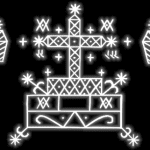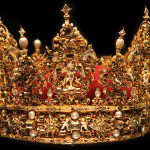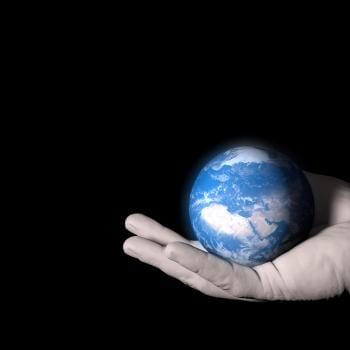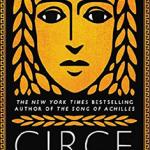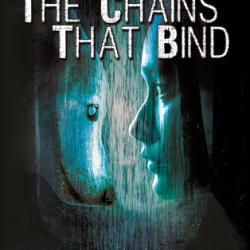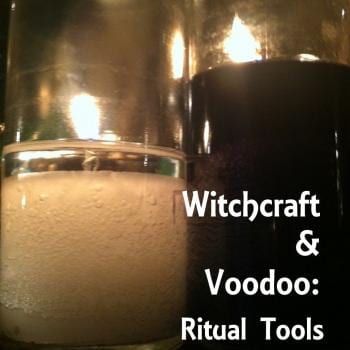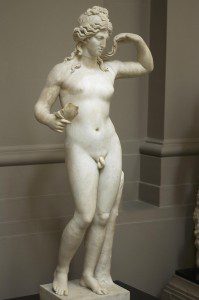 I got into a discussion with Nornoriel Lokason at his personal blog The Serpent’s Labyrinth, and a subject that came up as a result of that conversation was inclusivity in Wicca. A lot of people come into Paganism through the “Wiccan Gate,” but many leave it; not because they disagree with Wicca and not because they don’t believe in the things that Wiccans believe in, but because they perceive Wicca as being strongly hetero-normative and gender-essentialist. This isn’t the Wicca that I practice, but I get where the impression comes from. In honouring the union of the Lady and Lord, it seems that there is a glorification of heterosexual sex. I agree with the glorification of sex and love in general (“all acts of love and pleasure,” after all,) but for me, that it happens to be a Lady and a Lord whose union we celebrate is a representation of biology and nothing more.
I got into a discussion with Nornoriel Lokason at his personal blog The Serpent’s Labyrinth, and a subject that came up as a result of that conversation was inclusivity in Wicca. A lot of people come into Paganism through the “Wiccan Gate,” but many leave it; not because they disagree with Wicca and not because they don’t believe in the things that Wiccans believe in, but because they perceive Wicca as being strongly hetero-normative and gender-essentialist. This isn’t the Wicca that I practice, but I get where the impression comes from. In honouring the union of the Lady and Lord, it seems that there is a glorification of heterosexual sex. I agree with the glorification of sex and love in general (“all acts of love and pleasure,” after all,) but for me, that it happens to be a Lady and a Lord whose union we celebrate is a representation of biology and nothing more.
The fact is that in nature (with exceptions mostly in the form of single-celled organisms) in order to make new creatures, we generally require one spermatozoa and one ovum. This doesn’t mean that there’s anything wrong with homosexual sex or love, but it does mean that male + female equals new life. I think that gender is a construct anyway, and giving gender to these universal forces – Goddess and God – is a metaphor for the forces of creation. It is meant to be inclusive by nature; but I get that it can be limiting, especially since gender and sexuality are spectrums, not absolutes. One of the big reasons that I am Wiccan is that I could not see the image of the Divine in myself when the deity is some stern father figure on a distant throne, and that there were different rules for men than there were for women, justified by the belief that the divine was masculine. Especially as a strong-willed bisexual woman, I think it important that we not make the same mistakes.
Wicca has no shortage of GLBTQ people who contribute to its cultural milieu, but perhaps we should be making a greater effort to include GLBTQ images of deity and mythology. I think one of the best parts about Wicca is that we see the divine in ourselves and ourselves in the divine; but where, for example, does a trans man like Nornoriel see himself in Old Hornie?
Don’t get me wrong; I think he’s there! Pan is part of our Wiccan construct of the Horned God, and Pan is, to be blunt, as queer as a three-dollar bill (one of the many things I love about Him, by the way). But we don’t talk about that much, do we? We never emphasize that aspect.
I was considering the myths and the deities that we look to, and I thought about ways in which we could focus on some more inclusive myths. Here are some ideas based in both history and in modern Wiccan perspectives:
- There is a wealth of material in classical mythology that celebrates love between gay men in particular. Achilles and Patroclus are often seen as “warrior-lovers,” though of course that relationship is disputed by scholars.
- Greek gods who had homosexual affairs or relationships include Apollo, Dionysus, Hermes, Poseidon, and Zeus. Technically they were brothers, but I could see a good metaphor for the psyche, or the cycles of ebb and flow, in a tumultuous relationship between Apollo and Dionysus.
- The patron of intersex and transgendered people in Greek mythology is thought to be Dionysus, who was gestated from His father Zeus’ thigh, though He was conceived by a mortal woman. A way to include that might be to describe Him/Hir in more gender-fluid terms.
- The matron of lesbians, according to Sappho, is none other than the indomitable Aphrodite. I could see a possible relationship between Her and Artemis/Diana, who is said to “prefer the company of women.” Of course, Diana is also Queen of the Witches and mother of Aradia by Her brother Lucifer, so I view Her personally as a sort of matron for bisexual woman. And since it is well-known that Ares and Aphrodite are loyal in their love of one another, though Aphrodite is married to Hephaestus, They might also be excellent matrons for polyamorous relationships.
- Aphrodite’s child by Hermes, named somewhat colloquially Hermaphrodite, is both male and female, and this is, of course, where we get the word from. A great myth could be told of Hermaphrodite trying to find Hir place in a gender-binary world; and I’m sure it would inspire the many people who face that same struggle.
- Baphomet is also both male and female, though in Hir case, the emphasized myth in occultism is the balance between male and female aspects and thus, an incorporation of both elements for personal empowerment.
- In some interpretations (Thelemic, usually) Anubis, son of Osiris and Nephthys, is seen as being a balance of male/female energies and genders.
- Pan is perceived as pansexual (men, women, goats, nymphs; equal opportunity kind of guy, Pan). Though in this case, I don’t think we lack stories. In places in Western Canada, in addition to an Aphrodite’s temple we have a “Pan’s Lair” at some festivals, which is a place for consenting adults to do things in couples or groups that are a little more kinky.
- Lilith is called the “hairy woman.” We see Her as a modern symbol of feminine empowerment, but She also dares to challenge prescribed gender roles and that aspect could be emphasized in story.
- Loki, who gave birth to Sleipnir as a mare, is probably our most obviously gender-fluid modern Pagan god. There’s also a suggestion that He and Thor had “a thing.” I don’t think that needs a lot of work to flesh out, but we see it more often in Vanatru groups than Wiccan ones. We could tell it more.
- Freyr and Freya are often seen as having flexible sexuality. Freyr may have been worshipped by a sect of homosexual or gender-queer priests (Saxo Grammaticus, Gesta Danorum). T. Thorn Coyle focuses on Freyr and Freya in her Feri-derived practice and emphasizes Their gender-fluidity and Their fluid sexuality.
- I don’t see a lot of good examples of GLBTQ relationships in Celtic mythology; the best known one is perceived as a punishment. But there is a school of thought that perceives Cúchulainn and Ferdiadh as lovers, and I think that it’s a great tale of star-crossed love and friendship.
- The Holly King and Oak King, instead of being seen as competing, warring brothers, could be seen as lovers whose relationship give-and-take mark the seasons.
- There is a strange interchange between Horus and Set in Egyptian mythology that involves dominating one another by the placement of Their semen. Set tries to rape Horus and ejaculates on His thighs instead; then Horus ejaculates on some lettuce which Set eats; the presence of Horus’ semen inside Set legitimizes Horus’ claim to the throne. A different interpretation of this myth is that the intercourse between the two was consensual, though improper, and it produced Thoth’s lunar disk. Through Wiccan eyes, we could see this as a homosexual relationship between Darkness (Set) and Light (Horus).
- As Wikipedia points out, “Hindu mythology has many examples of deities changing gender, manifesting as different genders at different times, or combining to form androgynous or hermaphroditic beings. Gods change sex or manifest as an Avatar of the opposite sex in order to facilitate sexual congress. Non-divine beings also undergo sex-changes through the actions of the gods, as the result of curses or blessings, or as the natural outcome of reincarnation.”[1]
- In Feri practice (which is not Wicca* but which influences modern Wicca,) the Blue God is a lively pansexual figure who cheerfully has playful sexual relationships with men and women. The Blue God has roots in Krishna, Pan and Xochipilli (who is a gay and gender-queer deity,) and I see no reason why Wiccans of all traditions shouldn’t incorporate this lovely concept of the God. Conversely, the Feri Star Goddess, possibly* heavily influenced by Polynesian goddesses (who often have lesbian relationships) as well as the Western occult tradition, does likewise.
- If you incorporate Voodoo deities into your practice (which is becoming more and more common in Canada,) there are a wealth of bisexual, gay, queer, and transgendered lwa to look to.
There is no shortage of GLBTQ themes in mythology. I have chosen to focus on a few that have immediate relevance to Wiccan practice, but where you live, and which cultures you look to for inspiration, give you more options. Australian witches, for example, have a plethora of Aboriginal myths and legends to look to. North American witches can look to First Nations beliefs and practices.
I welcome discussion on this topic to share ideas for a more inclusive Wicca; feel free to share them in the comments.
For more information, check out this article on “LGBT Themes in Mythology” on Wikipedia.
* These sections were changed in response to a comment (see below).
[1] Wikipedia: “LBGT Themes in Mythology,” accessed November 5, 2014.

